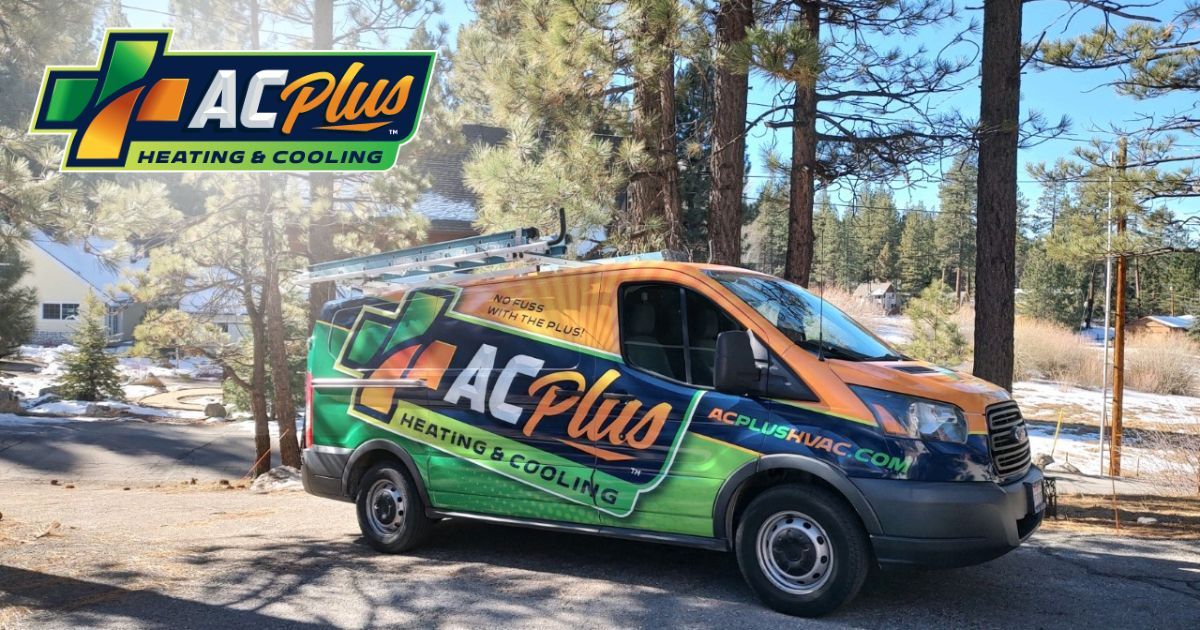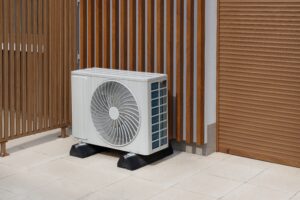How Do Heat Pumps Work?
Schedule service with one of our expert heating & cooling technicians.

We’ll explore how heat pumps work, the science behind heat pump transfer, and some common misconceptions about heat pumps so you can decide whether a heat pump is right for you. Read on to learn more.
What Is a Heat Pump?
A heat pump is a dual heating and cooling system that transfers heat from one place to another. In the winter, heat pumps gather heat from outdoors and move it into your home. In summer, they take the heat from the inside and move it outdoors.
Since heat pumps work by transferring heat rather than generating it, they’re considered more energy-efficient than traditional heating systems like furnaces. They’re also more versatile — rather than needing a separate furnace and air conditioner to generate heat or cold, you can use one system to provide both heating and cooling.
How Does a Heat Pump Work?
Although heat pumps are used for heating and cooling, the technology is most similar to a refrigerator or air conditioner. These use electricity to move heat from a low-temperature place to a higher-temperature place.
The Refrigerant and Switching Valve
The main component involved in the heat transfer is the refrigerant inside your heat pump. The refrigerant circles through a loop in your system, absorbing heat and transferring it through compression, forcing heat release.
When it’s time to switch between heating and cooling modes, the switching valve reverses the direction of flow.
The Energy Source
Most heat pumps use either an air source or a ground source to draw energy. In an air-source system, the pump moves heat from the outside to the indoors to heat your home. In ground-source pumps, your heat pump draws warmth from the earth or the groundwater and moves it into your home.
This outside heat energy is transferred to air or water in your house. Air systems heat the air like a traditional vented system, while water systems transfer the heat to water, which then becomes hot and is moved through your home via radiators or other water heating plans.
The Science Behind Heat Transfer in Heat Pumps
When thinking about how heat pumps transfer heat, it’s helpful to think of temperature in terms of thermal energy. Normally, energy moves naturally from high-temperature areas to low-temperature areas. Since the heat pump reverses the direction of flow, it requires extra energy from electricity to power the process.
When thermal energy is removed from a source, the temperature of that area drops. So when your heat pump is set to cooling mode, it extracts thermal energy from inside your home and transfers it outside.
Similarly, the temperature rises when thermal energy is added to a space. Your heat pump extracts the heat from outside your home, compresses it to increase the temperature, and moves it indoors.
Heat Pump Operation in Summer vs. Winter
The heat pump heating and cooling process is the same in summer and winter — the only major change is the direction of transfer.
How Does a Heat Pump Work in Summer?
In summer, your heat pump moves thermal energy from inside your home and deposits it outdoors. This cools your interior space, much the same way a traditional air conditioner does.
How Does a Heat Pump Work in Winter?
In winter, your heat pump draws energy from outdoors and moves it inside. Even in cold weather, the air still contains thermal energy that your heat pump can access. Once the refrigerant absorbs and compresses the heat, it carries it indoors and releases it into your home.
Common Heat Pump Misconceptions
From the use to the cost, there are plenty of misconceptions about heat pumps. We’ll explore some common myths, as well as the real benefits of heat pumps for efficiency and versatility.
Myth: Heat Pumps are Just for Heating
Many people think a heat pump is simply a furnace substitute, but it delivers efficient heating and cooling power. Since you can use them as a furnace and an air conditioner, they’re great for homeowners looking to reduce the amount of space used by temperature control systems inside the home.
Myth: Heat Pumps aren’t Efficient in Cold Weather
Heat pumps typically require the same amount of maintenance as a furnace or air conditioner. Energy Star recommends an annual pre-season checkup for your furnace and air conditioner. Since a heat pump combines both functions, the ideal heat pump service schedule is once in the fall and once in the spring.
Additionally, proper maintenance can extend the life of your heat pump, even beyond the typical service life of 15 to 20 years.
Myth: Heat Pumps are Very Expensive
Although heat pumps often have a slightly higher upfront cost than traditional furnaces, they can quickly pay off in energy savings. Particularly if you run your furnace or air conditioner for long periods, switching to a more energy-efficient heat pump can reduce your energy bills and save you money in the long run.
Additionally, California offers rebates for heat pumps to help offset the cost of installation. Consider applying for the TECH Clean California program’s heat pump rebates if you’re retrofitting your home or installing a new heat pump.
Call AC Plus for Heat Pump Installations and Maintenance in Southern California
Whether you’re considering installing a new heat pump or browsing for reliable heat pump maintenance, AC Plus delivers the expertise you need for all your heating and cooling questions. Our licensed pros provide inspections, maintenance, and repair for a wide variety of heat pump makes and models.
We can also advise on the best heating and cooling systems for your home to help you find a solution that fits your space and budget. Contact us today to set up your next heat pump appointment.
Written By Matt Postoian
Matt Postoian has been in the HVAC industry for over 20 years and is dedicated to providing homeowners in Southern California with total home comfort.
Service Request
"*" indicates required fields


